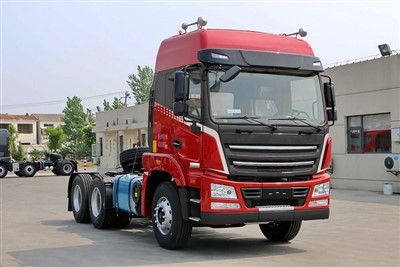The Comprehensive History of the Auto Industry

The auto industry has undergone profound changes since its inception in the late 19th century. From the invention of the first gasoline-powered vehicles to the rise of electric cars and autonomous driving technology, the journey of the auto industry is marked by innovation, competition, and evolving consumer preferences. This article delves into the key milestones of the auto industry history, examining its development, challenges, and future prospects.
The Birth of the Automobile: 1769-1900
The First Automobiles

The concept of the automobile dates back to the late 18th century, with inventors such as Nicolas-Joseph Cugnot creating steam-powered vehicles. In 1769, Cugnot built a three-wheeled vehicle that could carry passengers, marking the beginning of motorized transportation.
The Transition to Gasoline-Powered Cars
In the late 19th century, Karl Benz and Henry Ford revolutionized the auto industry with the invention of the gasoline-powered vehicle. Benz patented the first true automobile in 1886, while Ford’s assembly line production techniques in the early 20th century significantly lowered manufacturing costs and made cars affordable for the masses.
Key Innovations
- 1886: Benz Patent Motorwagen – the first automobile designed to be propelled by an internal combustion engine.
- 1913: Ford introduces assembly line production, reducing car prices and increasing accessibility.
The Rise of Mass Production: 1900-1940
Early Automakers and the Birth of Fordism
The early 1900s saw the emergence of numerous automakers, including General Motors, Chrysler, and Chevrolet. Ford’s innovations in mass production not only transformed the industry but also set labor standards and improved worker conditions through higher wages and reduced work hours.
Impact of World Wars on the Auto Industry
Both World War I and II significantly impacted the auto industry, as manufacturers shifted to produce military vehicles and equipment. Post-war, the industry faced increased demand for consumer automobiles, leading to a boom in production and sales.
Key Developments During This Period
| Year | Event |
|---|---|
| 1914 | Ford’s Model T becomes widely popular, revolutionizing personal transport. |
| 1936 | First mass-produced car with an all-steel body introduced by Ford. |
| 1941 | U.S. automakers redirect production to support the war effort. |
Post-War Growth and Global Expansion: 1945-1980
The American Auto Boom
After World War II, the auto industry experienced unprecedented growth in the United States, with increased consumerism and the rise of suburbs driving demand for cars. Automakers introduced numerous innovations, including automatic transmissions, styling, and safety features.
International Competition Begins
The post-war period marked the entry of overseas manufacturers, particularly from Japan and Europe. Brands like Toyota and Volkswagen began gaining popularity, leading to increased competition in the market.
Significant Auto Models of the Era
- 1955: Chevrolet Bel Air – a symbol of American car culture.
- 1964: Ford Mustang – introduces the pony car segment.
- 1970s: The oil crisis shifts consumer preferences towards fuel-efficient cars.
The Era of Innovation: 1980-2000
Technological Advancements
The late 20th century witnessed a surge in technological innovations in the auto industry. This period introduced electronic fuel injection, anti-lock braking systems (ABS), and advanced safety features.
The Rise of Japanese Automakers
Japanese manufacturers like Honda, Nissan, and Toyota began leading markets, known for their efficiency and reliability. The introduction of models like the Honda Accord and Toyota Camry redefined consumer preferences in favor of compact, fuel-efficient cars.
Key Changes During This Period
| Year | Event |
|---|---|
| 1984 | BMW launches the 325i, popularizing luxury compact vehicles. |
| 1997 | Toyota introduces the Prius, marking the start of hybrid vehicles. |
The New Millennium: 2000-Present
Environmental Concerns and Fuel Efficiency
The early 2000s saw a growing awareness of environmental issues, prompting automakers to innovate more fuel-efficient and eco-friendly vehicles. The introduction of electric vehicles (EVs) gained momentum, with Tesla leading the charge.
Technological Breakthroughs and Autonomous Vehicles
Advancements in technology enabled the development of autonomous vehicles. Companies like Waymo and Tesla began testing self-driving cars, showcasing the potential future of the industry.
Recent Trends in the Auto Industry
- The proliferation of electric vehicles (EVs) as a viable alternative to traditional combustion engines.
- Integration of smart technologies, including advanced driver-assistance systems (ADAS).
- Shift towards shared mobility and ridesharing services altering the landscape of vehicle ownership.
The Global Auto Industry Today
Current Market Dynamics
The global auto industry today is characterized by rapid technological advancements, increased competition, and evolving consumer preferences. Key players in the market are focusing on sustainability, with many automakers committing to significant reductions in greenhouse gas emissions.
Challenges Facing the Industry
Despite growth, the auto industry faces numerous challenges including supply chain disruptions, fluctuating raw material costs, and the challenges brought on by the COVID-19 pandemic. Manufacturers are needing to adapt quickly to ensure resilience in the market.
Future Industry Outlook

Experts predict a shift towards electric and autonomous vehicles will continue, with significant investments in research and development aimed at sustainability and technological innovations.
Practical Tips for Auto Industry Stakeholders
Tips for Consumers
- Consider fuel economy and emissions when purchasing a vehicle.
- Research available features in safety and technology for added value.
- Stay informed about government incentives for electric and hybrid vehicles.
Tips for Automakers
- Invest in R&D to keep pace with technological advancements.
- Focus on sustainability and environmental impact to meet consumer demands.
- Consider diversifying product offerings to include electric and autonomous vehicles.
FAQ Section

1. What was the first automobile ever made?
The first automobile recognized as being designed to be propelled by an internal combustion engine was the Benz Patent Motorwagen, developed by Karl Benz in 1886.
2. How did the Ford Model T impact the auto industry?
The Ford Model T revolutionized the auto industry by introducing assembly line production, making cars more affordable and accessible to the average consumer.
3. What are some key trends shaping the future of the auto industry?
Key trends include the rise of electric vehicles, technological advancements in autonomous driving, and an increasing focus on sustainability and environmental responsibility.
4. Which companies are leading the electric vehicle market?
Tesla is widely considered a leader in the electric vehicle market, along with traditional automakers such as GM, Ford, and Nissan, who are increasingly introducing EV models.
5. What challenges does the auto industry currently face?
The auto industry faces challenges including supply chain disruptions, regulatory changes regarding emissions, and competition from new technologies and startups.
6. How will technological advancements affect future vehicle designs?
Technological advancements will lead to smarter vehicles equipped with enhanced safety features, autonomous driving capabilities, and improved fuel efficiency, fundamentally changing vehicle design and functionality.
